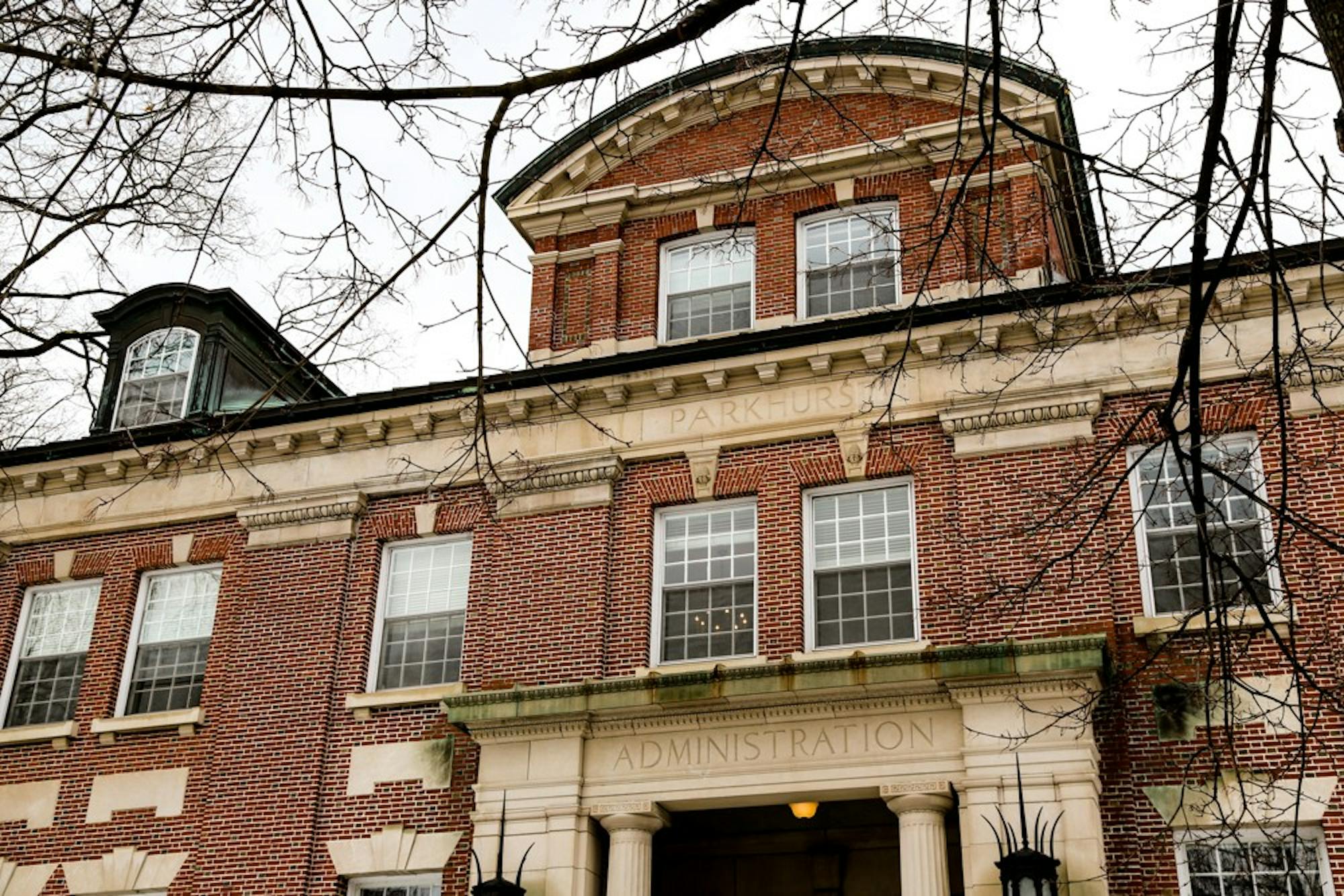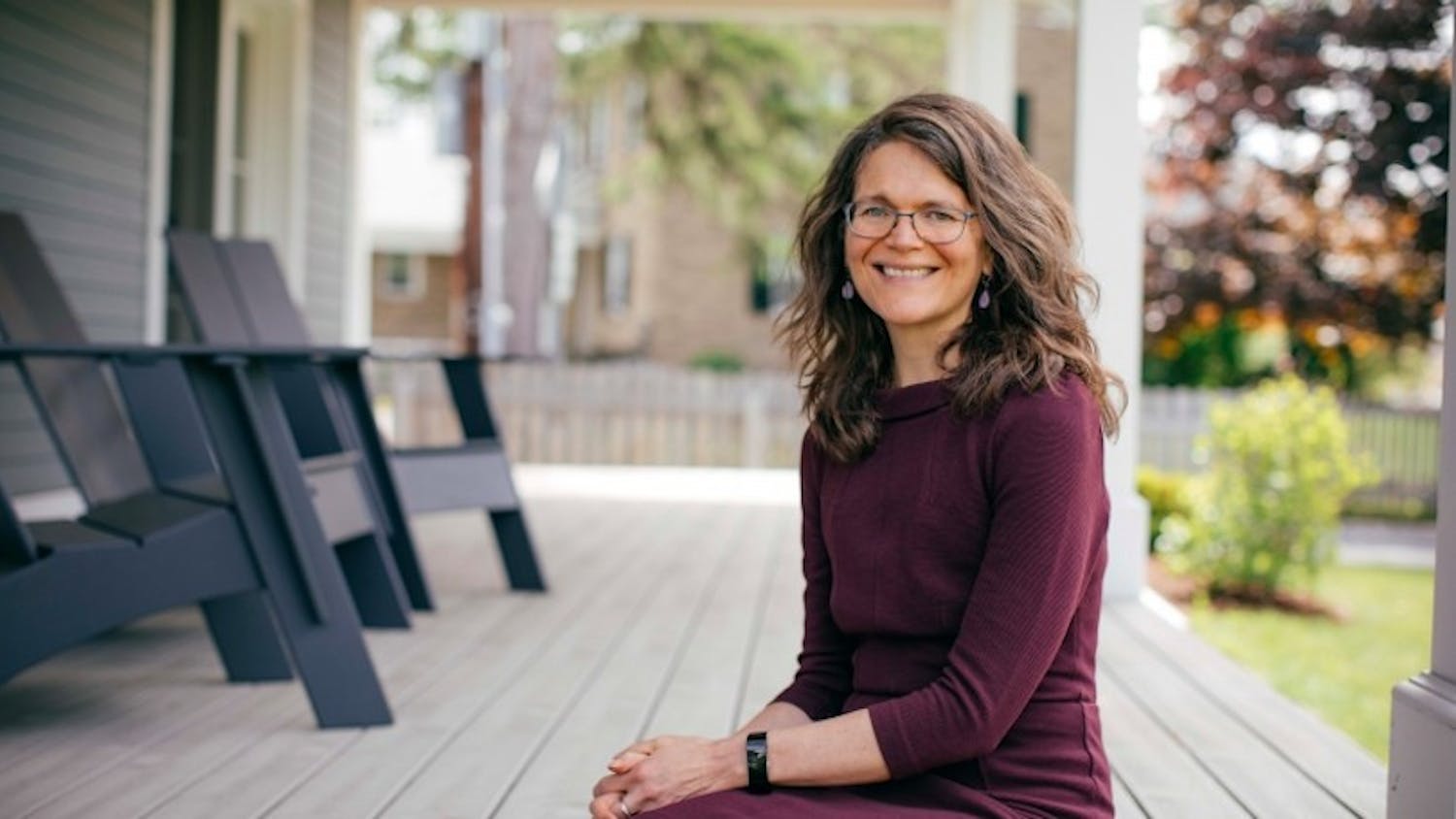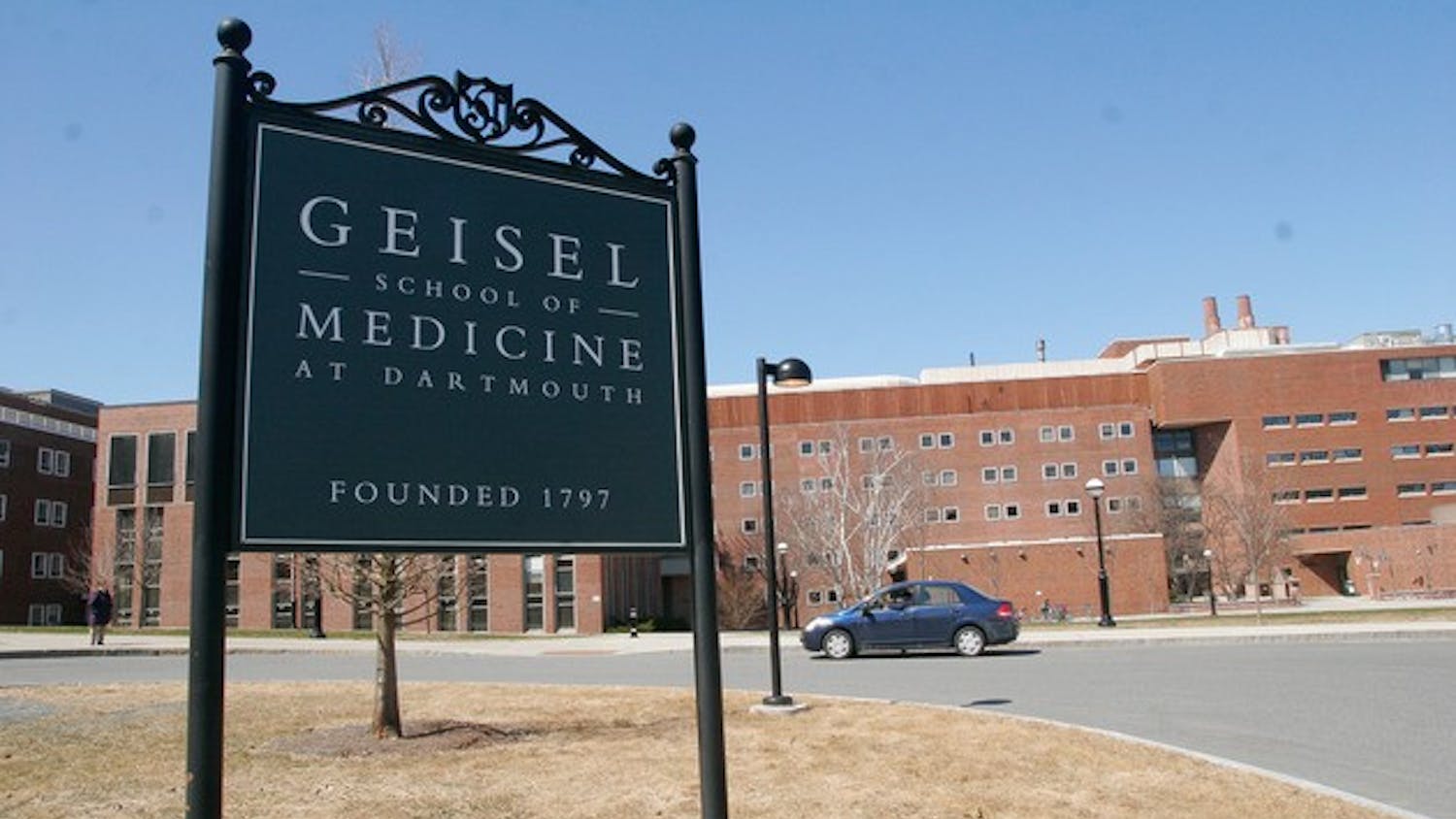This article is featured in the 2021 Winter Carnival special issue.
Since its founding, Dartmouth’s administration has evolved from just a few roles into a sizable bureaucratic web. As Dartmouth grew both in size and in operational complexity, the College added a slew of new positions, and responsibilities — especially of the president and provost — have shifted. However, all senior administrators still work under the overall direction of the Board of Trustees.
History and evolution of the College administration
When Eleazar Wheelock first established the College in 1769, the president, a librarian and a treasurer formed Dartmouth’s administration, according to College archivist and records manager Peter Carini. Carini said the administrative structure did not change substantially until College President William Tucker arrived at Dartmouth in 1893, when he first installed a dean of the College, before a secretary of the president in 1901 and various other positions. Today, the number of administrators greatly outnumbers these original few.
“Tucker realized that as president, he could move the College in new directions,” Carini said.
Tucker’s administration created the secretary of the College in 1905 to serve as secretary of the Board of Trustees, and a dean of faculty of arts and sciences was added in 1933 as a liaison between faculty and the administration. More administrative positions came into place when John Sloan Dickey became president in 1945, and the position of the provost was created between the end of Dickey’s administration and the early days of College President John Kemeny’s tenure.
As of 2019, the latest report available, Dartmouth has 24 “chief institutional officers” that work in departments ranging from undergraduate admissions to public relations. In 2018, 943 faculty members and 2,938 full-time and 328 part-time staff members worked for the College.
While Wheelock, Tucker, Hopkins, Dickey, Kemeny and even current College President Phil Hanlon have added different roles to their cabinets, one common theme that ties their governance together is their influence over the administrative structure, according to Carini.
“Each president comes in and not only appoints the people they want within those positions — usually within a year or two there'll be a shake up — but the president also can reshape the structure of the administration by adding or elevating different positions,” he said.
For example, the College — under Hanlon’s direction — appointed Shontay Delalue on Feb. 4 as the College’s senior vice president and senior diversity officer to oversee equity and inclusion. Delalue, in the newly elevated position, will join the College’s senior leadership group and meet with the president weekly.
Meanwhile, the position of the provost has not always been as heavily involved in operating the College as it is today. According to Carini, the president took on most of the College’s operational tasks up until the end of Dickey’s administration.
“The provost is a position that has really shifted a lot,” he said. “The president has kept apprised of the details he needs to know, but I don't think that the president runs the institution in the way that they did 30 or 40 years ago, and a lot of that has transferred to either the chief financial officer or the provost and some other deans.”
Role of the president
Different departments, staff and faculty members come together to operate the College, with the president in charge of fundraising, the executive vice president overseeing campus facilities, the provost planning the budgets and academics and the Board of Trustees approving the College’s overall key initiatives. Administrators collaborate closely with each other and with the Board, but Board members ultimately have the final say in approving measures.
Carini described academic institutions as “one of the most autocratic governing structures in the world, if not the most autocratic other than a political dictatorship.” He said that the faculty have some governance say in the College, but it has decreased over the years, noting that the College president’s main goal is to “keep [the Board of Trustees] happy.”
Carini noted that between Kemeny’s and Hanlon’s administration, the president took on more fundraising responsibilities, while operational duties were gradually delegated to the provost. From Carini’s perspective, the more recent presidents are the College’s “direction setters at a high level” and “chief fundraising officers” who represent the College to the public.
Carnini also observed that as increasing fundraising became a more integral part of the College over the past century, the size of the administration has also “exploded.”
When Hanlon took on his presidency, he appointed Robert Lasher as the College’s senior vice president for advancement. He also launched the $3 billion “Call to Lead” campaign in 2018, which has reached 91% of its goal.
While over time many of the president’s tasks have been delegated to the provost, the president’s direct connection with the dean of the faculty of arts and sciences has remained mostly unchanged. Provost Joseph Helble said that this unique relationship persists in large part because the faculty of arts and sciences is “the focus of the undergraduate institution” and the College’s largest faculty excluding the clinical faculty at the Geisel School of Medicine.
Additionally, the president is usually a part of the College’s faculty, rendering communication with the dean of the faculty especially important. For example, Hanlon was a math professor at the University of Michigan prior to becoming president, and he has continued to teach during his presidency. For example, last fall he co-taught Math 108, “Topics in Combinatorics” alongside graduate student Benjamin Adenbaum.
“The president has always been a member of the faculty. … They are sort of like the highest ranking faculty member in a weird way,” Carini explained.
The provost: managing the College’s budget and academic operations
The provost, created more recently in the College’s history, is currently among the highest positions in the senior administration, reporting directly to the president as the chief academic and budget officer at Dartmouth. All of the College’s academic deans — except for the dean of faculty — report directly to the provost’s office.
Helble said that prior to the pandemic, his main responsibility as the College’s chief budget officer had been to plan Dartmouth’s annual operating budgets to ensure that the operating costs were not growing faster than the revenues. While his role did not change when the pandemic hit, Helble said the tasks of making budgetary adjustments and planning the College’s operations have become much more time-consuming as a result of COVID-19.
During the pandemic, important decisions related to the College’s operations, such as the number of students allowed on campus each term, have come from the provost’s office with recommendations from the COVID-19 task force and in consultation with Hanlon and the Board of Trustees, according to Helble. He added that he consults with Hanlon on most of his decisions, even if his office is ultimately in charge of finalizing them.
Helble compared his role to being the chief operating officer of a large organization, while Hanlon is regarded as the chief executive officer.
“A good way to think about it is that the responsibility of the president is to set the vision and direction of the college or university,” he said. “And the provost is charged with implementing that vision.”
Dean of the College Kathryn Lively reports directly to the provost and oversees student affairs, campus health and the house community system.
Executive vice president: operating campus services and facilities
Two of Hanlon’s key appointments include naming Richard Mills as the executive vice president and Michael Wagner as the College’s chief financial officer, marking the separation of the College’s finances from the EVP’s tasks. Meanwhile, the EVP focuses more on the College’s strategic initiatives.
As EVP, Mills reports directly to Hanlon and oversees seven administrative roles, including chief financial officer and the director of Safety and Security. He said one important part of his job is having oversight over central campus services and facilities, such as the custodial crew and dining operations.
“I'm essentially the administrative counterpart to the provost, who reports to the president,” Mills said.
Mills’s responsibilities have fluctuated since he started working at the College. In 2015, Mills oversaw the College’s residential operations, dining services and the Skiway among other departments that previously operated under the provost’s office. During this time, Safety and Security — which used to report to the dean of the College — was also placed under Mills’ management.
Mills said changes in the reporting relationships of different administrative departments reflect the College’s evolution, such as the change in oversight for Safety and Security. As Dartmouth’s graduate schools expand, campus safety is no longer limited to protecting undergraduate students, which explains why Safety and Security stopped reporting to the dean of the College — a position mainly overseeing undergraduate students' affairs, according to Mills.
Another important responsibility that senior administrators like Mills have is the reshaping and hiring of key positions within the departments they oversee. For example, after previous vice president of campus services, Steven Moore, left the College in 2019, his role became combined with that of the vice president for institutional projects. Josh Keniston then took over the new position — vice president of campus services — in April 2019.
In this role, Keniston said he focuses on College initiatives like the Dartmouth Green Energy Project and the graduate student housing project. Due to the “cross-cutting nature” of the projects under his direction, which exceed the scope of traditional campus services, Keniston draws on academic, financial and legal inputs.
Keniston noted that some of the institutional projects have slowed down as a result of the COVID-19 pandemic, adding that as the co-chair of the College’s COVID-19 task force, he now dedicates a significant amount of time to operationalizing public health measures in campus facilities, such as reorganizing the setup of dining halls.
Helble described the general policy-making process within the senior administration as a “partnership and collaboration.” When issues arise, a working group composed of staff, faculty members or students are appointed to look into them and provide recommendations. The findings will be presented to either the EVP or to the provost when the issue has an academic component, and a group of about 14 senior leaders who report directly to Hanlon will collectively discuss the policy recommendation. The senior administration does not have a formal voting procedure like the Board of Trustees does, but Helble said he sometimes asks for a “raw poll” to gauge responses from other senior leaders.
The Board of Trustees
While the College’s administrators are tasked with carrying out the president’s vision, they ultimately need permission from the Board for strategic initiatives to move forward. The Board, which includes the governor of New Hampshire and 24 other members, takes on a fiduciary responsibility for the institution. It is responsible for overseeing the work of the senior leaders while focusing on the long-term strategy and overall institutional health, Board of Trustees chair Laurel Richie ’81 wrote in an email statement.
Within the Board of Trustees, members are assigned to 10 committees that advise the work of different senior administrative leaders. For example, while Helble acts as the primary Dartmouth representative on the academic excellence committee, Mills and Keniston work closely with the campus planning and facilities committee. Senior leaders would attend the Board’s and the committees’ meetings to present their recommendations and hear Board members’ perspectives.
While some operational decisions are made without the Board’s review or approval, issues like the initiation of construction projects and the selection of the College president require their support.
One mechanism that pushes the agenda of the Board and the senior administration forward is voting. According to Helble, the president and the chair of the Board make “a judgment call” to decide whether issues should be presented to the entire Board.
Keniston said that while working on the Center for Engineering and Computer Science, he had many discussions with the campus planning and facilities committee to ensure that his plans aligned with the parameters that the Board has set. He added that at the end of certain design phases, the committee would weigh in and hold a vote before the vote went to the full Board. Most votes are passed by a simple majority, except for “a very few specific instances” where a higher standard is required by College bylaws, according to Richie.
The myriad ways in which College administrators work with each other can be “messy,” Mills noted, but he added that the policy-making process that allows different voices to be heard ultimately makes the College operate as smoothly as possible.
“Whether you're a faculty member or a staff member, people come to work in higher education or a nonprofit because they actually believe in the mission,” he said. “And part of what I think makes it work is the workforce. Whether academic or administrative, people are here because they want to be here, and they believe in what the place is doing.”




